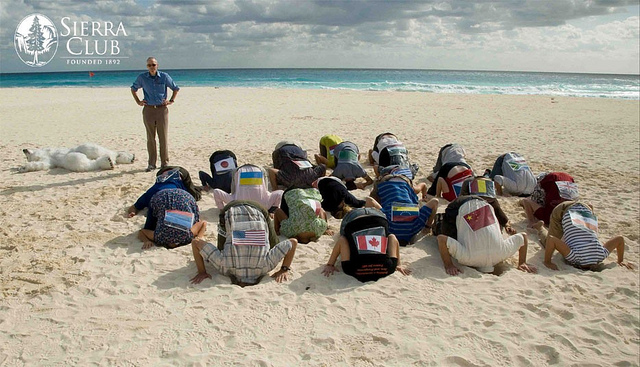The attacks by the Trump administration on Obama era climate advances are much more sinister than just the headline threats of increasing pipeline infrastructure and demolishing emissions standards. I know what you’re thinking, how could this get any worse? In addition to the undoing of protections for a healthy climate, Trump has dismantled necessary funding and policy guidance needed for communities to survive the increasing and intensifying impacts of climate change, including climate-induced storms and weather events. This means that coastal communities, tribal nations, farmers, and other frontline communities are being cut off from the resources that could save their livelihoods and even their lives.
With the very real threats of drought, such as the subsequent wildfires in already financially-burdened places such as Arkansas and Oklahoma, sea level rise, and warming waters in the Gulf of Mexico threatening to intensify storms and hurricane season, the Trump administration has sent a very clear message: states and private citizens are on their own to figure out how to deal with the burden of withstanding the impacts of an increasingly unstable climate.
What are communities like Louisiana’s Isle de Saint Charles, where 98 percent of land has been lost to sea level rise, supposed to do? The area’s predominantly indigenous population (Biloxi-Chitimacha-Choctaw tribe) is being told to relocate according to a resettlement plan put in place by the Department of Housing and Urban Development under President Obama. Will they still have access to the government funds promised to move their community? What will the Inupiat coastal barrier island community of Shishmaref, Alaska do to follow through with the 89-73 vote to relocate if there are no government funds?
The multiplied threats of climate disruption means that we will see an increase in people displaced from their homes. Between 2008 and 2013 sudden onset disasters have displaced an estimated 164 million people and in 2014 alone, according to the Internal Displacement Monitoring Center 2015 report, natural disasters forced 19 million people from 100 countries to flee their homes- most of whom are women.
Obama’s executive orders and the Climate Action Plan, the Trump administration is inhibiting communities’ ability to protect themselves from imminent dangers that are even more potent as a result of increasingly lax climate mitigation policies. Resiliency in the face of climate disruption depends on a community's ability to adapt to changing circumstances like infrastructural improvement, disaster risk management consideration in natural resource and community management planning, and cross-agency collaboration points- all elements of the Climate Action Plan. Preparing for climate impacts felt by frontline communities must be a serious consideration by the Trump administration. If ignored, there will not only be vast financial ramifications (something the largest Naval base in the world is currently grappling with in Norfolk, Virginia), but there will be widespread loss of lives and culture.
This is a real blow to the reputation of the Trump administration not only in the eyes of American citizens, but also in international diplomatic relations. In a little over a month, the world will meet in Cancun, Mexico for the UN Conference for Disaster Risk Reduction. What will the Trump Administration bring to the table after undoing federal action on climate disruption? The United States has gone from being climate leaders under Obama to putting their heads in the sand.

Activists at the UN climate negotiations in Cancun, 2010, calling on world leaders to get their heads out of the sand and make bold movements towards a just climate agreement.
The Trump administration must take the threats of climate disruption seriously- and that means protecting vulnerable communities. Join us in telling your representative that you want to move the world forward and reject the Trump administration’s attempt to end all Federal climate action. See you at the People’s Climate Movement in DC or your city.